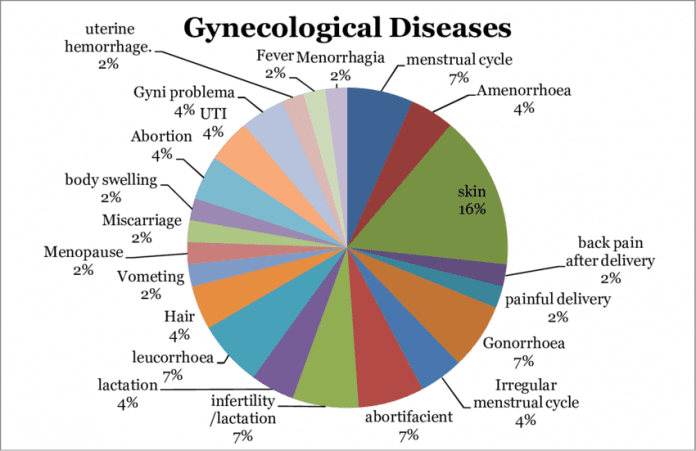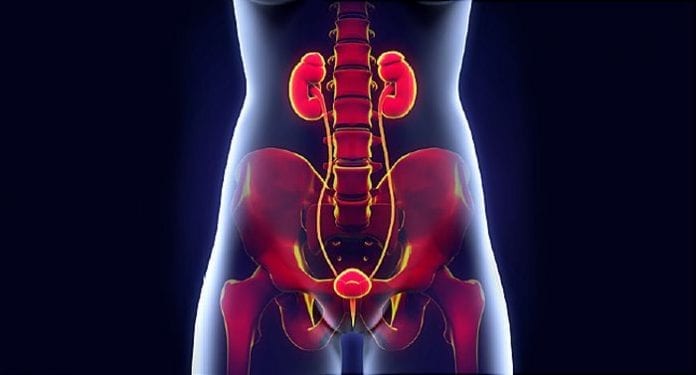During their lifetime, women can face some gynecological diseases. These conditions can be related to menstrual irregularities, uterine problems, infections and irritation, perimenopause and menopause, breast pain, etc. Gynecological diseases usually appear with some kind of a symptom.
The most important thing regarding this topic is that every condition or disease is treatable as long as it is detected on time. Therefore, going to see your doctor is crucial. Due to the fact that scientists in the modern world know a lot about these diseases, the solution to your problem exists.

Even though there are many causes and factors which influence gynecological issues, the most common ones are the usage of unreliable feminine hygiene sprays, oral antibiotics, sexually transmitted diseases, etc. Hence, the before mentioned most frequently cause infections and irritations. If you are interested in learning what some of the most common gynecological diseases are, as well as about their symptoms and treatment, please continue reading the following article.
1. Yeast infections

Yeast infections are infections that cause vaginal irritations. According to statistics, three out of four women are likely to experience yeast infection once in their lifetime. These infections are, in fact, related to yeast infections, which are normally found in the vagina. In other words, when their number gets bigger, the infection occurs. There are many factors that can cause the infection, for example, oral contraceptives, antibiotics, or diabetes. It is not uncommon for infection to occur during pregnancy. Also, sometimes, the usage of perfumed feminine hygiene sprays is connected to the occurrence of this condition. The question is: how can a yeast infection be treated? Thanks to the fact that many women were troubled with this, scientists have studied it for a long time. Therefore, it is usually treated by medications.
2. Irregular bleeding

When it comes to menstruation, it occurs once a month. During these days, every woman experiences blood loss. The amount of blood loss is typically 4 ounces (8 tablespoons). Usually, this period is characterized by one day of heavier bleeding, while others are categorized as lighter-flow days. Some women may experience more blood loss. This means that the bleeding is heavier more days in a row. Usually, this is followed by a strong cramping. What should you do if you experience irregular bleeding? If this happens to you, the first thing you should do is visit your doctor. The treatment can vary depending on your condition. Hence, you could be prescribed with drugs. However, if the bleeding is severe, you might need surgery.
3. Bartholin’s cysts

According to Yourdoctor.online, Bartholin’s cysts are highly likely to disappear on their own. Even so, sometimes, it happens that the cyst gets infected. The infection can be caused by many factors, some of which include STDs – sexually transmitted diseases, which are infections that spread through sexual contact. STDs represent a threat both to the men’s and women’s health. Therefore, it is important to learn everything we can about them.
Typically, STDs are caused by viruses, bacteria, parasites, or yeast. Luckily, thanks to medical progress, the majority of them are treated with antibiotics. If you are wondering whether there is a relation between Bartholin’s cyst and STDs, we have to tell you that there is. Even though it is rare, it can happen that an STD is the cause of Bartholin’s Abscess. Usually, there are two types of STD which cause this cyst – Gonorrhea, and Chlamydia. If you are interested in learning more about what this is, as well as about the treatment, please visit Yourdoctor.online, since you will be provided with all the necessary information there.
4. Genital Herpes

Genital Herpes is closely connected to STDs – sexually transmitted disease (mentioned above). Herpes is characterized by sores and blisters, which appear around the genital organs. Furthermore, other symptoms of this disease include muscle pain, chills, fever, and nausea. If you experience the symptoms, you should see the doctor who will prescribe you with oral medications.
5. Dysmenorrhea or Painful periods

During menstrual cycles, women can experience pain. This condition is called dysmenorrhea. It is divided into two categories – primary and secondary dysmenorrhea. The difference between the two lays in the fact that primary dysmenorrhea is not associated with pelvic disorders. Also, it occurs due to natural chemicals in the body. When it comes to secondary dysmenorrhea, it is caused by fibroids, adenomyosis, or endometriosis. Usually, both types of this condition are treated with medications.
6. Urinary Tract Infection (UTI)

This infection is very common among women. Typically, it occurs when a certain bacteria, which is present in the vagina or anus, moves to the urethra and bladder. Symptoms include the feeling of burning while urinating or even seen blood in the urine. Sometimes, it is followed by chills, fever, vomiting, or nausea. The usual treatment includes antibiotics prescribed by the doctor.
Unpacking Pelvic Organ Prolapse: Causes, Symptoms, and Treatment Options
When we discuss health conditions that are largely gender-specific, pelvic organ prolapse invariably comes up. This ailment occurs when one or more of the pelvic organs – such as the uterus, bladder, or rectum – descend into or protrude into the vaginal canal. This descent happens due to weakened pelvic floor muscles and ligaments, often resulting from factors like aging, childbirth, or obesity.
Recognizing the Symptoms
People with this condition may experience a range of symptoms, some more noticeable than others. Common ones include a sensation of pressure in the pelvic area, akin to a feeling of “fullness” or “heaviness.” Additionally, urinary incontinence and bowel movement difficulties can also indicate pelvic organ prolapse, affecting daily routines and quality of life. More distressingly, discomfort during sexual intercourse may also be a manifestation of this condition.
Navigating Through Treatment Options
When it comes to managing pelvic organ prolapse, options are diverse and typically dependent on the severity of the condition and its impact on one’s quality of life. Conservative measures often form the first line of defense. For instance, pelvic floor exercises, also known as Kegels, can be a valuable tool for strengthening the pelvic muscles and mitigating symptoms. Another non-surgical option is the use of pessaries, which are supportive devices inserted into the vagina to hold the pelvic organs in place. Also, you could click here to seek additional solutions.
To conclude, gynecological diseases have been studied and researched for a long time. Thanks to the advancements in medicine and technology, women can get the need for treatment. Like we said at the beginning, each of these conditions is treatable, and usually can be cured with the little help of medications. This is the reason why there is no need for panic, even if you notice a certain irregularity. Also, the important thing to keep in mind is that you should go to the doctor when you suspect that something is not right with your body. However, visiting your gynecologist is important for one more reason. Don’t do anything by yourself. Even though it sometimes seems that you have a minor infection and you can take a certain medication, you should consult the doctor first. After all, they are the experts.









